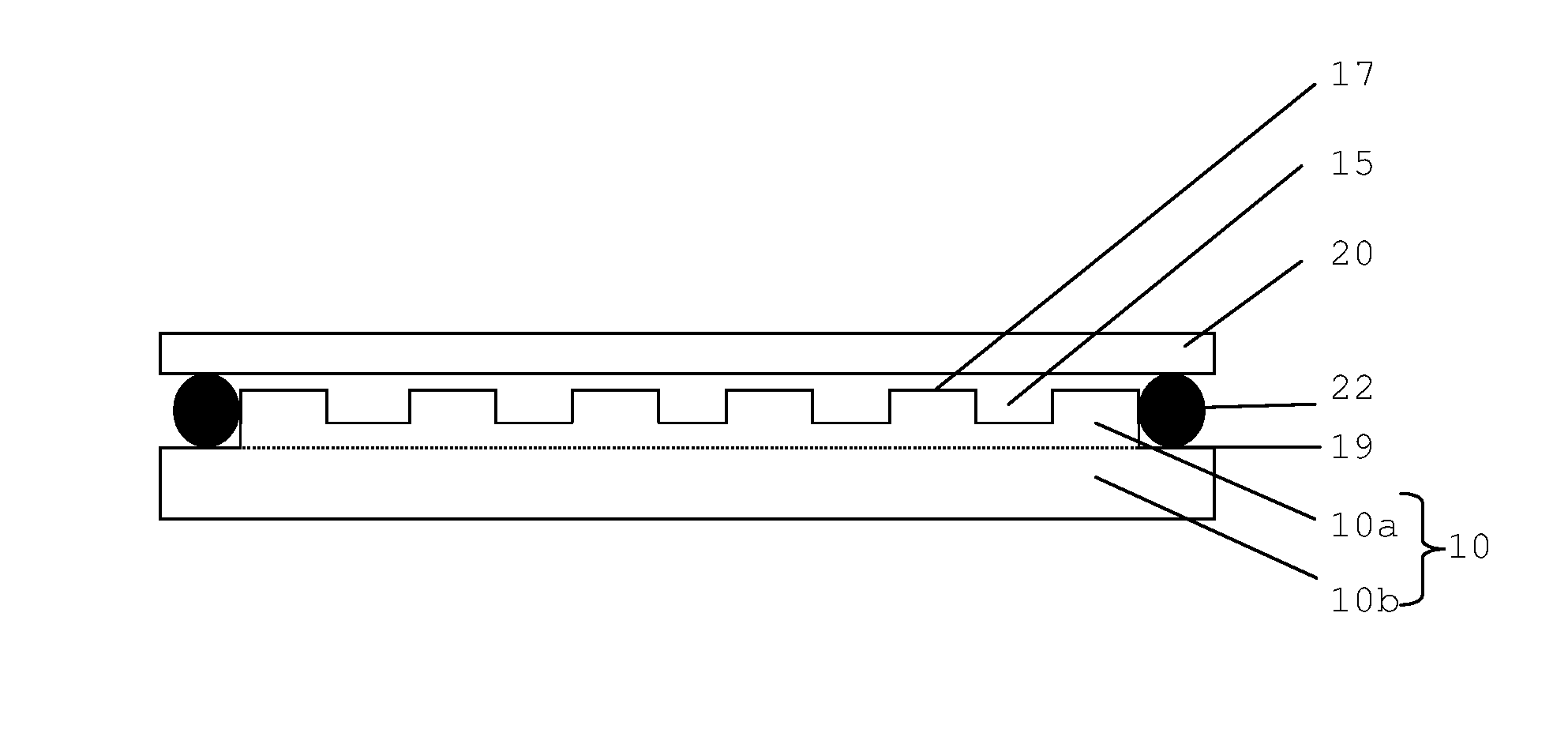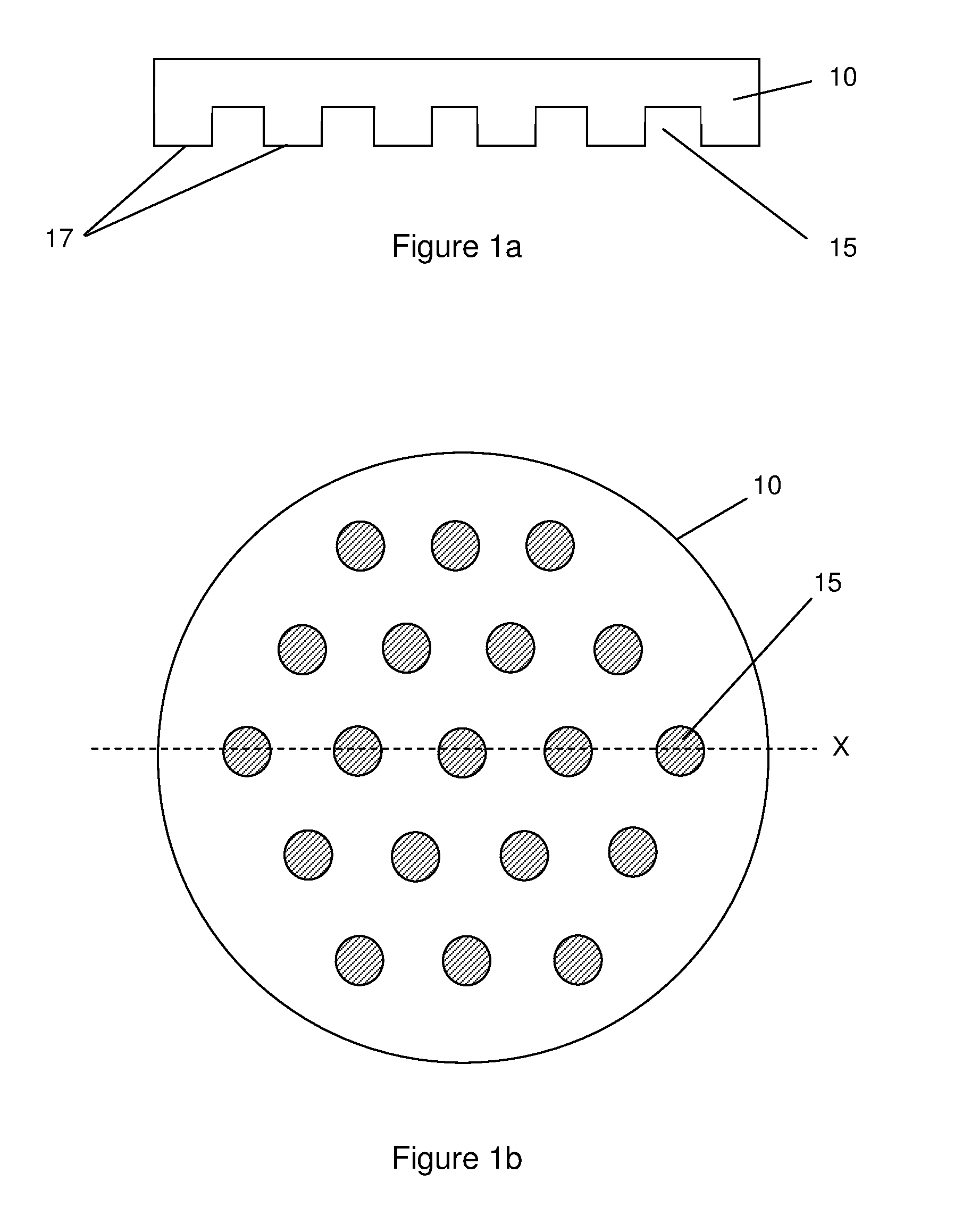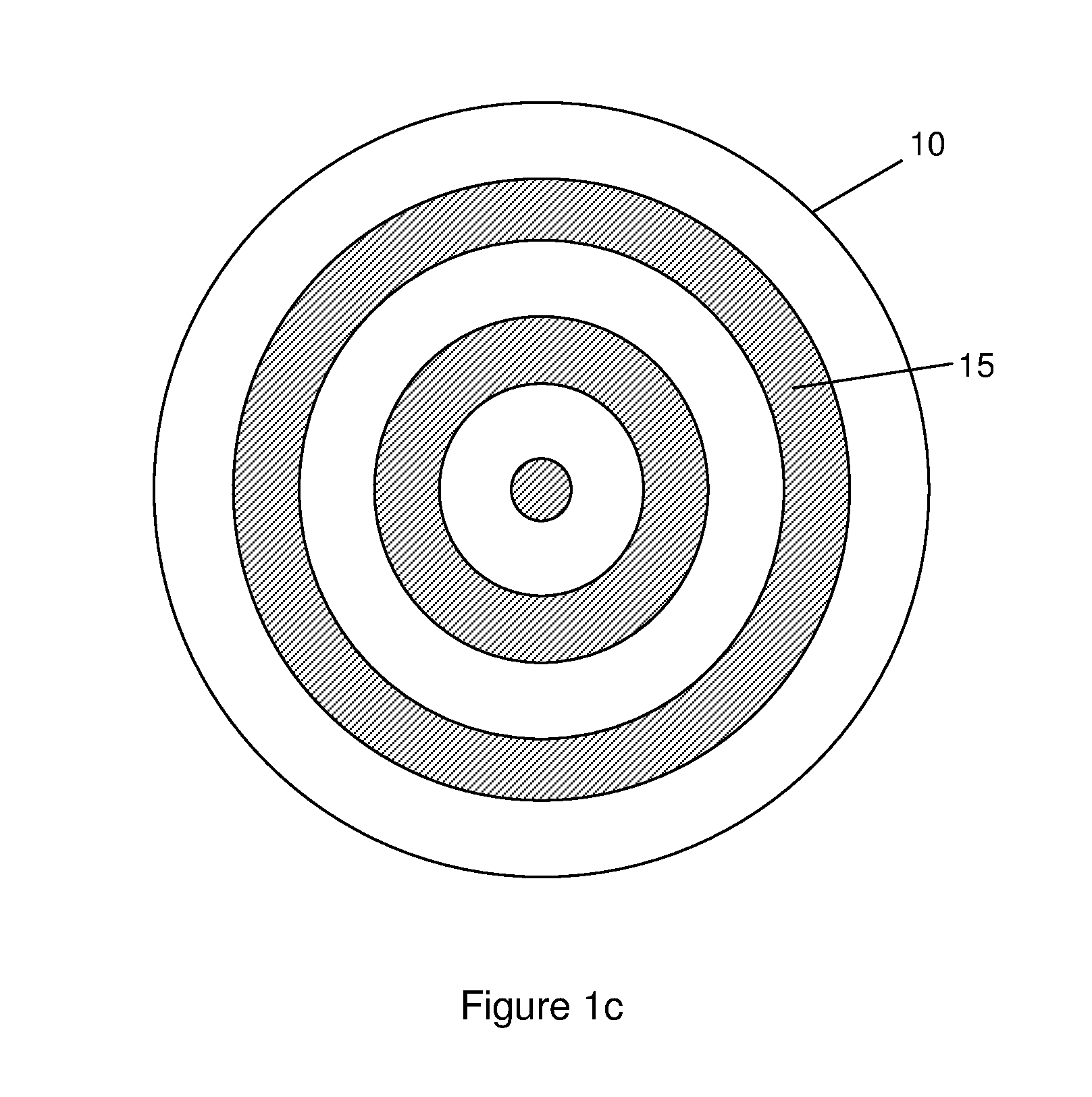Method and carrier for handling a substrate
- Summary
- Abstract
- Description
- Claims
- Application Information
AI Technical Summary
Benefits of technology
Problems solved by technology
Method used
Image
Examples
Embodiment Construction
[0084]There are many integrated circuit, MEMS, and III-V fabrication processes that require thinning of substrates or handling of thinned substrates or wafers during processing. For example, after fabricating devices on a front side of a wafer or substrate it is often necessary to perform processing on the back side of the wafer or substrate. For example, back side thinning. Conventional techniques bond the wafer or substrate to a carrier using adhesive. The wafer or substrate is then debonded from the carrier after backside processing has been performed.
[0085]FIGS. 1a and 1b show a carrier 10 for supporting a wafer or substrate during processing. In the following discussion we use the term wafer or process wafer, which normally refers to a semiconductor substrate, but other substrates such as glass may also be processed in this way.
[0086]The carrier 10 is of similar plan dimension to a process wafer to be processed or handled. For example, as shown in FIG. 1b the carrier may be cir...
PUM
 Login to View More
Login to View More Abstract
Description
Claims
Application Information
 Login to View More
Login to View More - R&D
- Intellectual Property
- Life Sciences
- Materials
- Tech Scout
- Unparalleled Data Quality
- Higher Quality Content
- 60% Fewer Hallucinations
Browse by: Latest US Patents, China's latest patents, Technical Efficacy Thesaurus, Application Domain, Technology Topic, Popular Technical Reports.
© 2025 PatSnap. All rights reserved.Legal|Privacy policy|Modern Slavery Act Transparency Statement|Sitemap|About US| Contact US: help@patsnap.com



